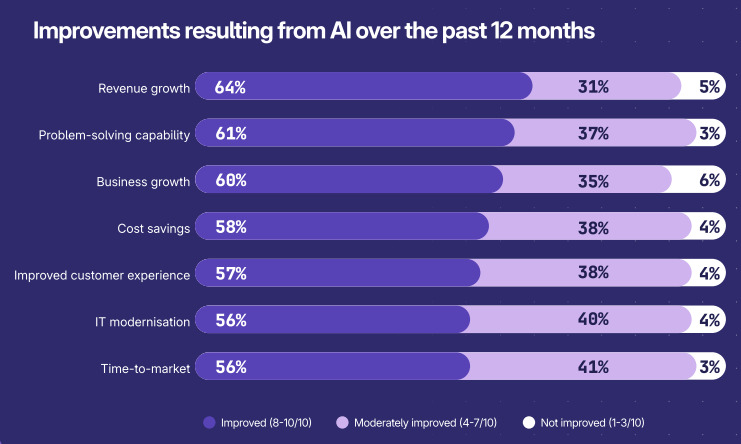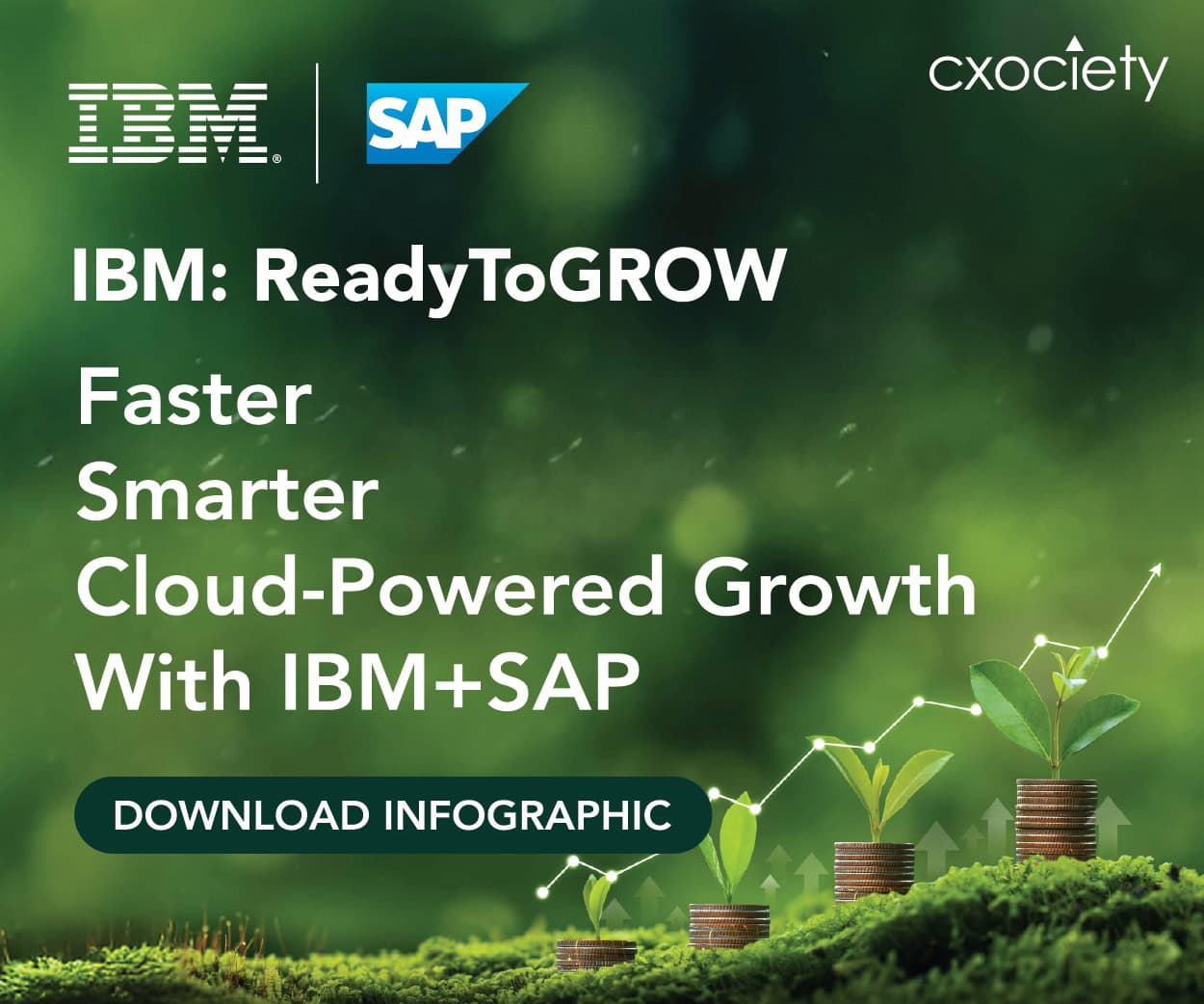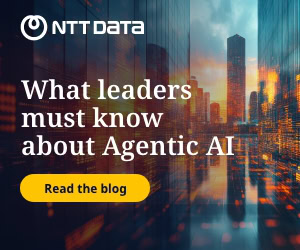In Southeast Asia’s hyper-accelerating digital economy — now valued at $263 billion and growing at 15% year-over-year — software is no longer a back-office function. It is the central nervous system of business innovation.
As Bain & Company’s e-Conomy SEA 2024 report reveals, nearly half of all private investment in the region is flowing into software and AI, signalling a fundamental shift in how enterprises create value.
A recent survey of 252 Singaporean C-suite executives positions AI-powered software innovation as a primary economic growth engine, revealing an SGD$6B+ annual opportunity for Singapore alone ($750B+ globally) through developer productivity gains.
However, 41% of these leaders expressed concerns about the need for further training to fill the skills gaps, while 89% anticipate that agentic AI will present unprecedented security challenges.
For CIOs and software development leaders across Singapore, Indonesia, Vietnam, and beyond, the mandate is clear: transform software delivery from a cost centre into a strategic growth engine — or risk becoming irrelevant.
“Every CIO that I meet… is aligning their objectives and, to your point, their budget with the annual reports of their organisations to service their customers, their shareholders, and the objectives of their leadership team,” says Andrew Haschka, field chief technology officer for Asia Pacific & Japan at GitLab.
The stakes could not be higher. Gartner’s 2025 CIO Agenda for Southeast Asia indicates that CIOs are now allocating 28% of their technology budgets to AI and digital business initiatives — a 5-point jump from 2024.
Yet, many organisations still operate with siloed toolchains, manual compliance checks, and development cycles measured in months, not days. In a region where video commerce now drives 20% of e-commerce GMV and mobile gaming exports are surging; sluggish software delivery is a competitive death sentence.
AI to power systemic transformation
Generative AI’s impact on software development is no longer a theoretical discussion. According to GitLab’s global research, 78% of DevSecOps professionals plan to adopt AI tools within the next two years — a sharp rise from 64% in 2023.
Haschka cautions against superficial adoption: “Many organisations are spending manual time trying to explain and resolve vulnerabilities before they deploy… spending too much time generating tests and identifying the best requirements off the back of business ideation.”
The real opportunity, he argues, lies not in isolated AI features like code autocomplete, but in rearchitecting the entire software lifecycle around “agentic AI” — intelligent agents that collaborate across planning, coding, testing, security, and deployment.
“I think the future is human and agent collaboration,” Haschka says. “It’s a combination of ensuring that one AI does not deliver one outcome with one human… it’s aligned with, how do we deliver complex outcomes with multi-agent flows?”
This is where Southeast Asia’s unique advantage comes into play. With $30 billion already committed to AI infrastructure in the first half of 2024 alone, the region is rapidly becoming a hub for data centres and edge-layer applications.
CIOs who embed AI not just in development tools but in governance, compliance, and operational workflows will unlock what Haschka calls “10x efficiency gains” — reducing cycle times from months to weeks, even days.
Consider a financial services firm in Jakarta. Traditionally, releasing a new feature might take three months — with compliance checks happening manually, post-deployment. “I met with a bank in Indonesia recently, and their approach to managing compliance… was with a spreadsheet,”
Haschka recalls. “After deployment… maybe then three months or six months down the line, they would go through with their spreadsheet to evaluate if that application was compliant.”
Now, imagine embedding compliance frameworks — from Indonesia’s PDP Law to ISO 27001 and NIST AI RMF — directly into the CI/CD pipeline.
“We can put those compliance frameworks into a manifest, into a policy, and then check through every step of the software development life cycle whether what we’re building… is compliant before we go on release,” Haschka explains.
The result? Faster time-to-market, reduced risk, and fewer regulatory fire drills.
Software as a revenue driver
Historically, software development has been perceived as a cost centre — a necessary expense, not a profit generator. But that’s changing. Bain’s report shows profitability across SEA’s digital sectors has surged 24% year-over-year, driven by tighter commissions, advertising revenue, and operational efficiencies unlocked by AI.


Haschka urges CIOs to reframe software’s value proposition in explicitly financial terms: “Maybe if we’re able to release three releases within a quarter now, rather than just one release, we’re delivering more innovation, maybe getting more revenue and getting more customers as a result. Maybe also… there is less downtime, less instability, and less risk… we have less churn… and so we’re able to retain more customers and grow the base.”
The key, he posits, is eliminating waste. “I’ve seen some organisations have as much as 20 or 30% rework for tasks delivered across their software development life cycle,” Haschka notes. “One-third of the time [developers] are passing that work back to say, ‘I’m sorry, I can’t start writing my code because I don’t have a complete set of requirements.’”
By implementing a “single source of truth” — a unified platform that connects planning, coding, testing, security, and operations — CIOs can slash idle time, reduce rework, and automate up to 50% of manual tasks.
“Half of [manual software delivery time] is very easily augmented with AI or automated,” Haschka says, citing GitLab’s C-Suite Insights report. “If we can reduce that rework time down from 40% or 30% down to maybe 10%… we’re seeing significant ROI gains.”
Governance, talent, and the human edge
As AI becomes embedded in every phase of software delivery, governance can no longer be an afterthought. “Governance, compliance, and risk are intertwined,” Haschka stresses.
With AI now being embedded directly into customer-facing applications — from chatbots in e-commerce to recommendation engines in fintech — new frameworks like ISO/IEC 42001 (AI management systems) and the EU AI Act are becoming essential.
Recommended reading: Standards and guidelines in multi-cloud management
“Beyond just data plane, sovereign control, compliance frameworks… there are many different frameworks now evolving,” Haschka says. The solution? “A more proactive, policy-driven approach for checking compliance frameworks” — baked into the development workflow, not tacked on at the end.
Equally critical is talent. The region faces a severe skills shortage, particularly in AI, security, and platform engineering. Haschka’s answer? Upskilling through augmentation, not replacement. “Finding the right talent is the challenge, but also up-levelling where their teams are at,” he says. In workshops with customers, GitLab identifies “toil” — repetitive, manual tasks — and replaces them with AI agents, freeing developers to focus on creativity, strategy, and innovation.
“The most valued human contributions to software development were typically around creativity, around strategic vision, around collaboration,” Haschka notes. “AI is around optimising and improving security… reducing cost, monitoring productivity… fast coding.”
The future belongs to “human in the loop” models — where AI handles the heavy lifting, and humans provide judgment, ethics, and vision.
2025–2026 Playbook for CIOs and Development Leaders
What must CIOs and software leaders do now to prepare for 2025 and 2026?
- Consolidate toolchains, embrace platform engineering
Reduce complexity by moving from fragmented tools to an integrated DevSecOps platform. “Simplify that in a way that allows them to… have a foundation by which then they can build a generative AI platform on top,” Haschka advises. Gartner predicts platform engineering will cut deployment times by 40% by 2026 — a critical advantage in fast-moving SEA markets. - Embed ai end-to-end — Not just in coding
Move beyond “vibe coding” and isolated AI features. Implement agentic AI across the entire SDLC — from requirements gathering and test generation to compliance checks and root-cause analysis.
“Optimise the software delivery experience for developers, for testers, security professionals, those in planning as well,” Haschka says. “But it needs to be governed. It needs enterprise governance. It needs scalability, it needs context.” - Tie software outcomes directly to business KPIs
Align software delivery metrics — release frequency, MTTR, vulnerability density — with revenue growth, customer retention, and market share. “The main objective of a CIO is to deliver outcomes as framed in the annual report, for their shareholders and for their leadership,” Haschka reminds us. Software must be measured not by lines of code, but by business impact. - Invest in AI-native experiences, not just AI tools
“I believe in AI native experiences,” Haschka declares. “If individual practitioners… need to specifically choose an AI to go and perform a specific task and it’s not readily available to them with an optimised user experience… then it’s going to be challenging.” The goal is seamless, governed, context-aware AI that’s part of the workflow — not an optional add-on. - Build for sustainability and talent resilience
As Stelia’s report notes, AI workloads can consume 2–10x more energy. CIOs must design for efficiency — not just speed. And with talent gaps widening, prioritise upskilling and “multi-agent” collaboration models that amplify existing teams.
“Help them to understand… that task that you’re performing, can it be fully delivered with the service for you, and you are maybe the human in the loop,” Haschka suggests.
Software as a core business
Southeast Asia stands at a digital inflection point. The region’s digital economy is on track to hit $1 trillion by 2030, fuelled by AI, e-commerce, and gaming. But capturing that growth requires more than investment; it necessitates a fundamental rethinking of software’s role within enterprises.
As Haschka puts it: “I don’t think these things operate in isolation. I don’t think risk management is separate to agent. AI is separate to innovation is separate to software delivery or empowerment. I think they are all intertwined.”
For CIOs and software leaders, the path forward is clear: break down silos, automate intelligently, govern proactively, and empower teams with AI-native workflows. In doing so, they won’t just deliver software faster — they’ll turn it into the most powerful engine of growth, innovation, and competitive advantage their organisation has ever known.
The era of software as a cost centre is over. The era of software as the core of business strategy has begun.





